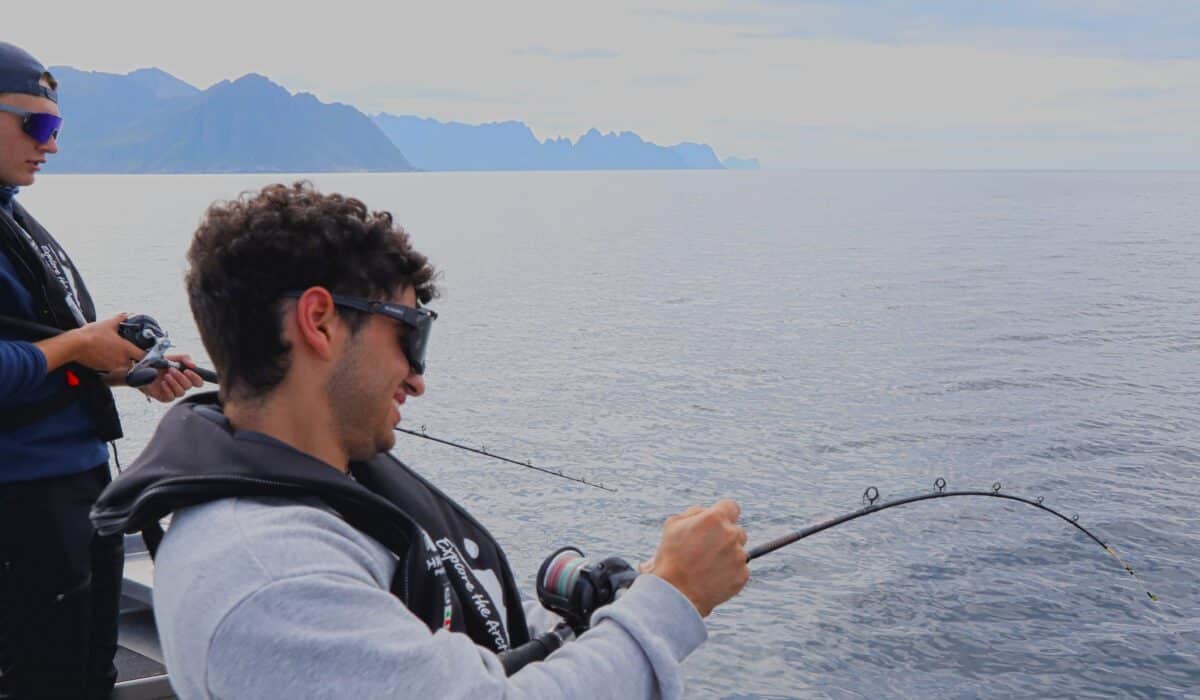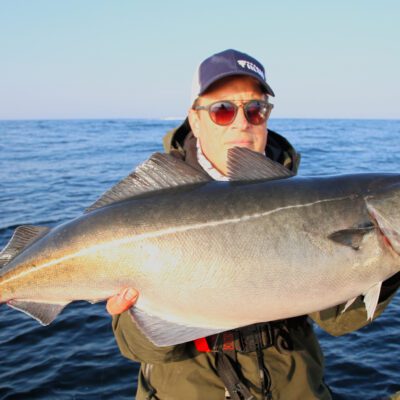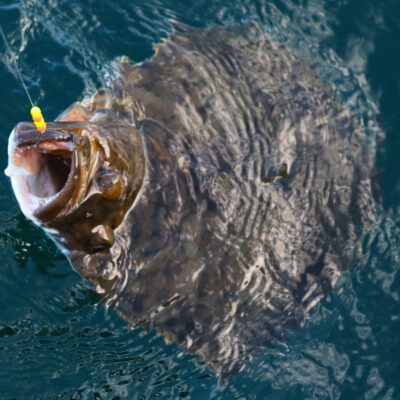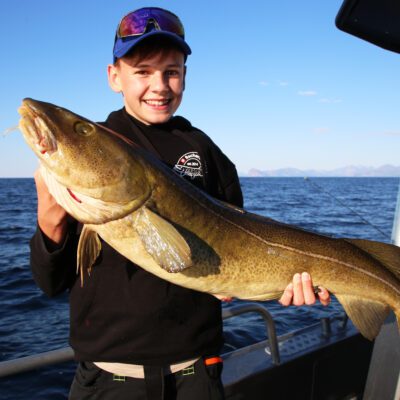This summer goes down in history as Northern Norway’s best ever in terms of weather, with around 40 days reaching over 20 degrees. From May to mid-August, there were also very few windy days, allowing us to fish wherever we wanted almost daily. In contrast, autumn was marked by unstable weather and frequent windy days.
This autumn really highlighted the importance of flexibility and backup days when booking a package with multiple fishing trips. We can adjust start times based on the weather and shift hours between days to make the most of the best conditions during your stay.
Overall, fishing was best from May to July this season, becoming more challenging later on. This was mainly due to the weather and record-high water temperatures, with offshore waters reaching around 17 degrees in the later part of the summer.
In spring, we received our second Arronet 30spt guide boat. We design this boat ourselves, and it has proven to be ideal for our fishing trips. More information about the boats can be found here: https://explorethearctic.no/boats/
The best halibut fishing this year was between May and July, with an average size significantly larger than usual, with many fish around 120-150 cm. The season’s largest halibut was caught at the end of May, measuring 2 meters, and was caught using a small coalfish at about 20 meters depth. We typically see a peak in halibut fishing during autumn as well, but challenging weather made this year’s autumn fishing tougher than usual. High water temperatures also delayed the start of this season’s autumn fishing. However, in mid-October, we had a few days of favorable weather, during which we caught around 30 halibuts. This demonstrates the strong potential for halibut fishing at this time of year.
A highlight of this year’s halibut fishing was a triple hook-up in mid-July. Double hook-ups aren’t uncommon, but we’ve only experienced a triple a few times before. The largest of the three measured approximately 165 cm.
Good news for 2025 is that quotas are likely to be introduced for halibut fishing. This is something we’ve advocated for over the past 10 years and should help ensure sustainable halibut fishing in the future.
The cod and coalfish fishing, as in recent years, was best from May to July. The largest coalfish weighed around 16 kg, and the cod about 20 kg.
Pollock fishing improves each year, and during a June trip, we caught two pollock over 10 kg, with the biggest at 10,5 kg, likely the largest pollock ever caught in Northern Norway.
Mackerel arrived at the start of July, with the largest caught weighing approximately 1,5 kg.
As usual, we had the best wolffish fishing from May to July.
Unfortunately, there was little time for plaice fishing this season, but on the few trips we managed, we caught fish up to around 2,5 kg.
While still a rare catch, anglerfish has been caught more frequently in recent years.
This summer, we explored some exciting new shore fishing spots, leading to catches like halibut, cod, coalfish, pollock, haddock, plaice, dab, and norwegian redfish. This type of fishing is largely unexplored in our area, but we plan to focus more on it going forward.
Although the offshore fishing season is now over, we will be running 3-hour fishing trips on the fjord throughout winter. Cod fishing is often good inside the fjords during winter. We also offer ice fishing in winter, with trout and char fishing on Kvaløya’s lakes and ice fishing on the fjord for cod and other species when conditions allow.
A warm thank you to everyone who joined us this season.
Until next time – tight lines!







